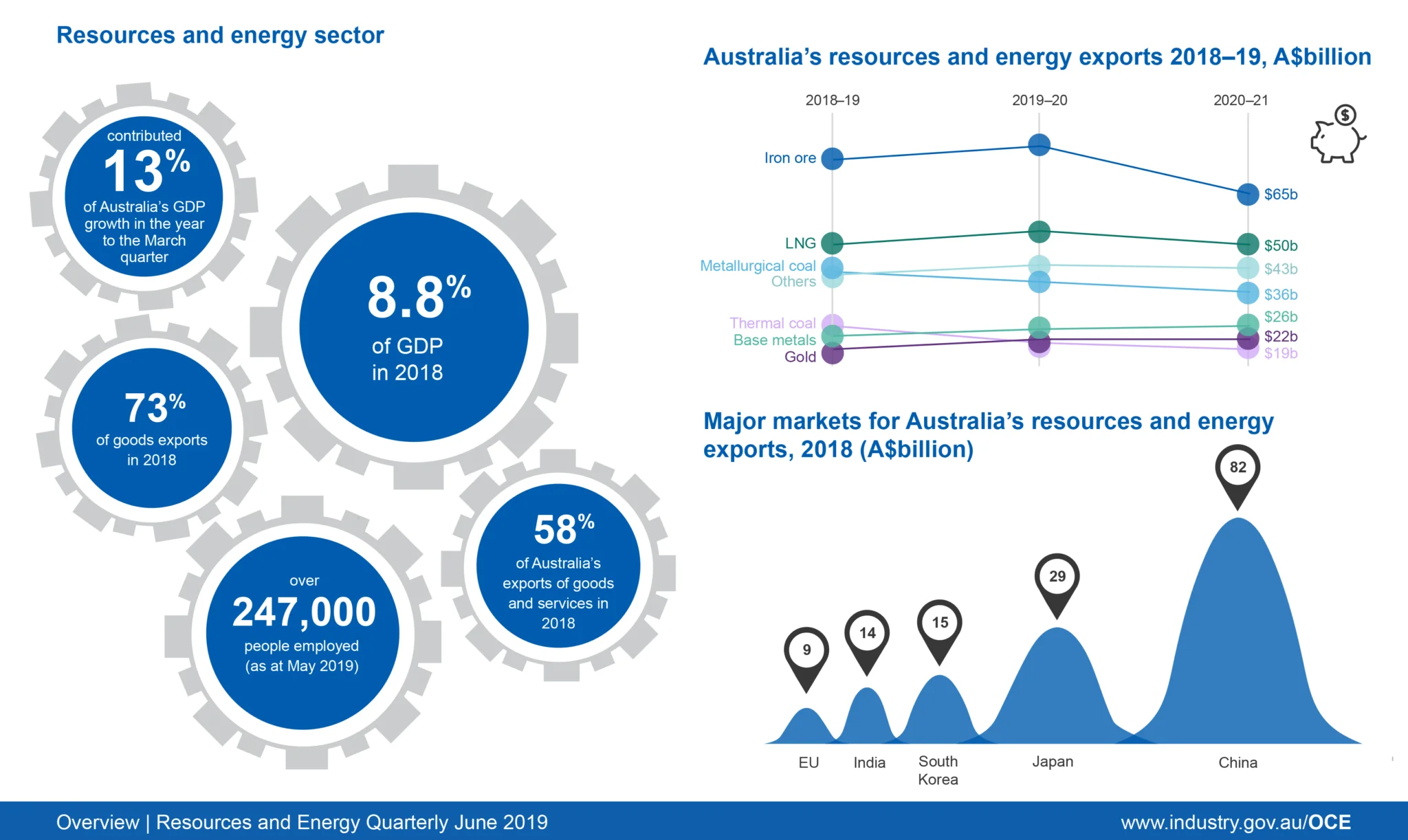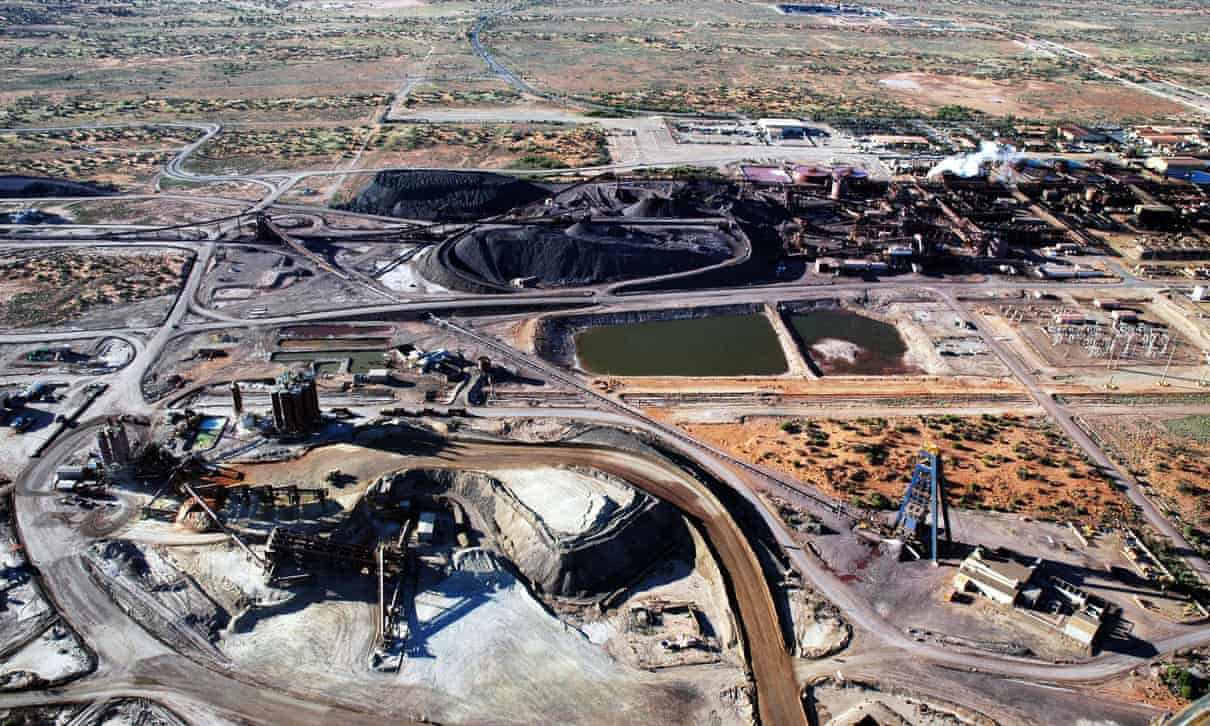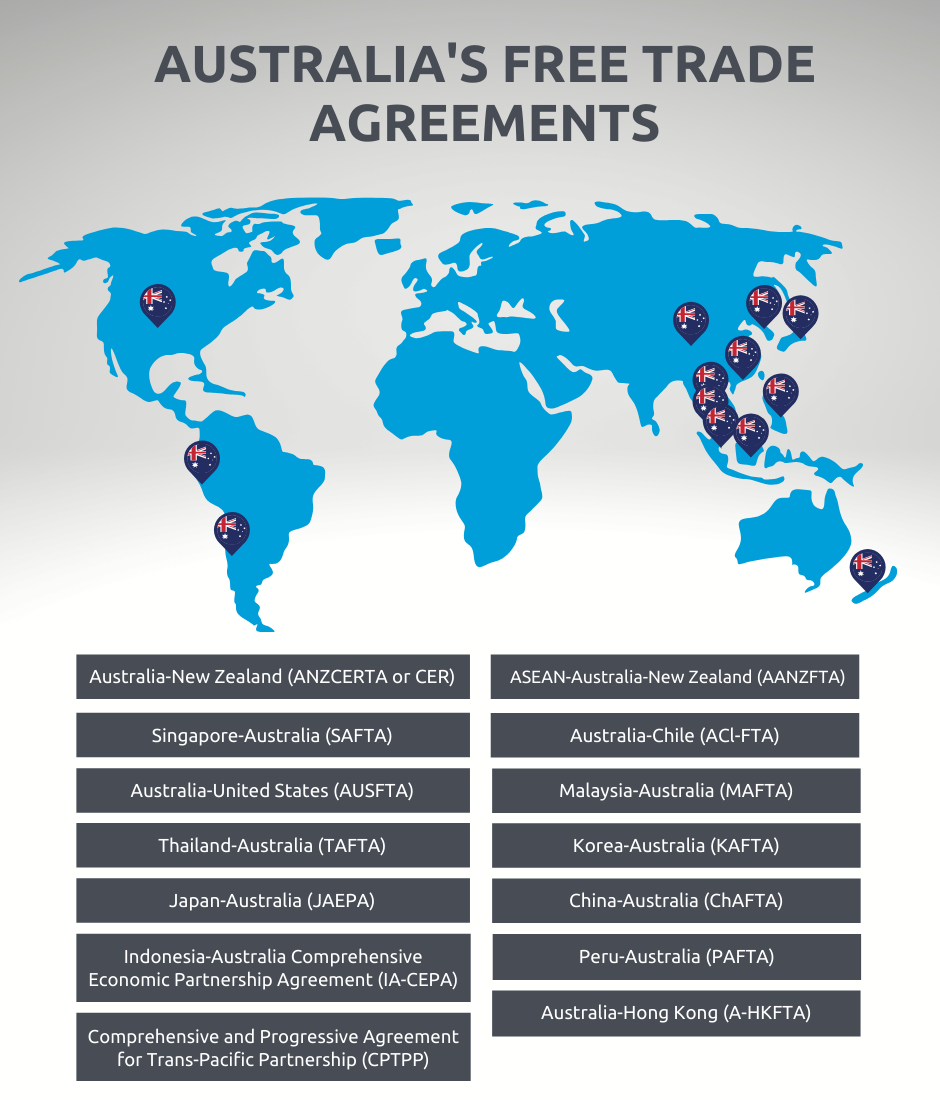Why Australian Goods Are Well Sought-After: Behind Our Exports High Demand
October 28, 2022 Uncategorized

Australian exports continually enjoy high demand from international consumers. In 2019, Australia exported around US$272.4 billion worth of goods around the world. The Department of Foreign Affairs and Trade recorded that Australia generated AUD$891,564 million from two-way trade with its top 15 trading partners in the 2018-19 financial year. This was a 20.5% increase from the previous financial year and an overall 5-year increase of 9.5%. We’ve also consistently experienced a high level of terms of trade (meaning our exports exceed our imports).
In this blog we’ll cover:
- Why Australian exports benefit from high demand
- Australia’s top exports and why it’s those particular goods that enjoy export success.
- Australia’s major exporting partners and the transit times to each of those destinations.
What are Australia’s main exports?
Australia’s mining and petroleum industries generate the bulk of Australia’s exports. We’re the largest coal exporter in the world. From 2000 to 2015, our coal exports doubled whilst our Liquified Natural Gas (LNG) exports tripled. A July 2019 report published by the Australia Institute found that Australia is the third-largest fossil fuel exporter in the world, only beyond Saudi Arabia and Russia.
Below are some of Australia’s primary exports for 2019:

1. Mineral fuels including oil (US$88.9 billion – 32.6% of total exports) and Ores, slag, ash (US$78.6 billion – 28.9%)
Australia exports a large amount of coal, iron ore, natural gas, aluminium and crude petroleum. The Minerals Council of Australia state that over the past decade, the country’s iron ore export volumes have increased by over 200%, with BHP, Rio Tinto and Fortescue as the nation’s major iron ore producing companies.
At the same time, Australia exports around three-quarters of its crude oil, mainly to Indonesia and Singapore[1]. Some of the primary oil & gas manufacturers are Woodside Petroleum and Santos.[2]
2. Gems, precious metals: US$18 billion (6.6%)
Australia produces some of the world’s finest precious metals, and the world recognises this.
Since the so-called ‘modern gold rush’ in the 1970s and 1980s, gold has become one of Australia’s primary exports. In 2018, we were the second-largest gold producer in the world (behind China), led predominantly by the mining industry in Western Australia. The Cadia-Ridgeway Mine in Orange, New South Wales and the Boddington Gold Mine in Western Australia are two of the world’s largest gold mines. Gold alone generated about US$16.2 billion in Australian exports in 2019.
3. Meat: US$11.5 billion (4.2%)
Aussie meat is well-known throughout the world as being of premium quality.
This is especially the case with steak. We exported around 1.3 million head of cattle in 2019, which was about a 19% increase from 2018. Most live cattle were exported to Indonesia, Vietnam and China. In 2017, it was reported that the country’s beef industry was the “cornerstone” of Australia’s agrifoods export success.
4. Machinery including computers: $4.8 billion (1.8%)
Whilst Australia imports the majority of its machinery, it still forms a sizeable portion of our exports. This is particularly due to the aerospace industry, which exported around USD$1.4 billion worth of aircraft parts alone in 2019, and about AUD$2,043 million in merchandise exports in 2017-18. A June 2019 report by KPMG found that around 14% of Australia’s total machinery exports came from the aircraft manufacturing and repair services industry.
For a detailed look at Australia’s top 10 exports, including a more detailed analysis of these items, take a look at our Top 10 Import and Export Blog.

Why are these Australian products particularly successful?
Australia is known for exporting high-quality products. Below, we’ll specifically look at three types of goods that have enjoyed success in the Australian export market.
Minerals and Precious Metals
As mentioned above, products such as gold, coal and iron ore have recently enjoyed surges in international demand. This is due to a variety of factors, some of which we outline here.
Australia’s natural reserves
Australia extracts a large amount of raw minerals and metals because our land is rich in natural resources, allowing industries to capitalise on those opportunities. Businesses are able to engage in far-reaching operations in every single Australian state and territory, whilst offering raw materials at competitive prices internationally due to the nation’s naturally high supply.
As stated above, we are the world’s largest coal producer and have several of the largest gold mines in the world. Furthermore, we are one of the small number of countries (notably, Canada) that produce a great deal of uranium.

Free trade agreements
Australia also has fourteen free trade agreements where our trading partners receive mutual benefits from working with the Australian market. This makes our goods more attractive to the international trader.
The China-Australia Free Trade Agreement (ChAFTA), which you can read more about here, is largely favourable to the Aussie coal industry. The Agreement eliminated the 3% tariff on coking coal and the 6% tariff on thermal coal. It also offers benefits to other minerals and metals industries, including the elimination of tariffs on refined copper, nickel, zinc, aluminium and titanium dioxide.
Similar benefits are also enjoyed under the Korea-Australia Free Trade Agreement (KAFTA). Under KAFTA, tariffs have been eliminated on crude petroleum, natural gas, titanium dioxide and aluminium. Other Australian resources and energy products will have their tariffs progressively reduced until elimination in 2023.

Food Products
As stated above, meat is one of Australia’s most important sources of export revenue. This is especially the case for frozen and fresh beef, sheep and goat meat and live cattle. But the same is also true for a variety of other foods including wheat, flour, starch, malt, nuts, barley and cheese.

Reputation
Australia has developed a global reputation for clean, healthy and safe food, which has generated high levels of demand across the world.
Food safety concerns in many other countries may explain this demand. Recent surveys in China found that 80% of respondents across 20 Chinese cities were unhappy with Chinese food safety, whilst over 80% were willing to pay more for safe food. This has provided many opportunities for Australian businesses to tap into the ‘clean and safe food’ demand in the Chinese marketplace. [3]
Increasing population and consumption
Growing populations around the world, coupled with increasing food consumption, is a strong factor behind growing global food demand. According to the OECD-FAO Agricultural Outlook 2019-2028, population growth is the “most significant factor behind the projected growth in food use of agricultural commodities”.
Interestingly, the report comments that a growing population is responsible for about 60% of the additional consumption of meat on the Asian continent. Much of the demand for Australian meat comes from Asia, so this is expected to rise in the future.
Pharmaceuticals and Medical Apparatus
Australian medical devices and medicines are in growing demand across the world, and this is expected to increase in the future. Medication mixes and blood fractions were in our top 20 exports in 2019, whilst optical readers, mechano-therapy devices and provitamins were also high on the list.
Reputation
Once again, Australia has developed a solid global reputation for producing safe and high-quality pharmaceutical products and medical devices. Complementary Medicines Australia state that we’re in a “privileged position” to capitalise on growing demand, which is driven by “our industry’s reputation for products that meet the highest standards of quality and safety”.
The health craze
As the world’s population becomes older and more passionate about their health, they’re in higher need of high-quality medical apparatus and medicine.
This is especially the case for China. According to KPMG, demand for Australian healthcare products stems from Chinese parents wanting products for their babies (recall the recent baby formula debacle), young Chinese adults who want vitamins to stay healthy and the elderly population who will go great lengths to come to Australia for its high-quality healthcare.
Australia’s major importing countries
Below we take a look at some of Australia’s closest trading partners, who largely source Australian goods. We’ll also look at approximate transit times between each country via ocean freight.
Generally, direct routes will be shorter (and may introduce a higher cost). The routes that take more time typically include transhipments. Transhipment refers to shipping goods to an intermediate destination prior to the goods being shipped to their end destination. Containers may be carried by a vessel into a port, but then offloaded from the vessel by a stevedore and then transferred to a completely different vessel. Transhipments usually occur when there is no direct shipment to a final destination.
For more information, you can read our blog on the differences between direct shipment and transhipment.
China

China is, by far, Australia’s closest trading partner who relies on Australian exports largely for their minerals and metals, petroleum and gas as well as their meat.
If you are shipping ocean freight from Sydney, Australia to Shanghai, China, the average transit time will be 20-35 days depending on the precise route you take.
Japan

Japan has always been a close trading partner of Australia since the end of World War Two and the signing of the 1957 Commerce Agreement. Our northern Asian neighbour relies on Australia largely for its food, minerals and energy. They have enjoyed a range of benefits from the Australian market since the signing of the Japan-Australia Economic Partnership Agreement (JAEPA) in January 2015.
Shipping freight to Japan from Sydney anywhere between around 15-25 days should you decide to export your goods via the sea.
South Korea

Since the signing of KAFTA, the economies of Australia and South Korea have become closer than ever before. We provide South Korea with manufactured goods (such as machinery) as well as food and raw materials.
Direct transit times from Sydney to Busan will take around 16-28 days, whereas other routes can take as long as 36 days.
India

Coming in at number four on our list of closest trading partners is India. India largely relies on Australia for energy, agriculture, education and tourism. Whilst there is no free trade agreement with India, the two countries are highly connected and recognise the importance of each other to their mutual economic success.
Shipping from Sydney to Nhava Sheva, Maharashtra, India will take around 25-33 days.
United States

The United States is one of our closest trading partners, and certainly our closest defence partner. The year 2018 was recognised by the U.S. Senate as marking ‘100 years of mateship’ between the two countries. The United States rely largely on Australia for beef, with Australia taking the place of the largest beef exporter to America. We also export a large amount of aircraft, aircraft parts and pharmaceutical goods to the United States.
Shipping from Sydney to Long Beach typically takes around 35-44 days by sea.
Final Words
We hope this article has helped you understand why Australian exports are in high demand. If you’ve got any questions regarding exporting goods overseas or would like to know what industry exporters we work with, please don’t hesitate to contact our export specialists at ICE Cargo.
Request A Quoteor call us on 1300 227 461
Recommended For You

We Consult. We Plan. We Deliver.
- CONSULT – We discuss your specific needs.
- PLAN – We develop a bespoke tailored plan that is cost-effective & efficient.
- DELIVER – We manage your shipment and keep you updated from beginning to end.


